|
SNAP Library 3.0, Developer Reference
2016-07-20 17:56:49
SNAP, a general purpose, high performance system for analysis and manipulation of large networks
|
|
SNAP Library 3.0, Developer Reference
2016-07-20 17:56:49
SNAP, a general purpose, high performance system for analysis and manipulation of large networks
|
#include <xmath.h>
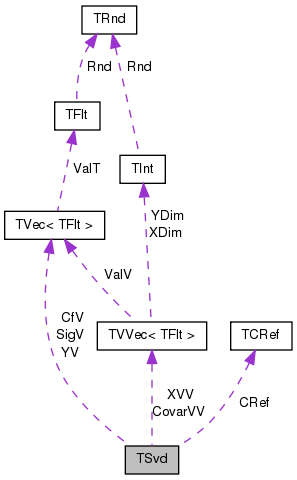
Public Member Functions | |
| void | GetXV (const int RecN, TFltV &VarV) const |
| double | GetY (const int RecN) const |
| double | GetSig (const int RecN) const |
| void | NR_svbksb (TFltVV &u, TFltV &w, TFltVV &v, int m, int n, TFltV &b, TFltV &x) |
| void | NR_svdvar (TFltVV &v, int ma, TFltV &w, TFltVV &cvm) |
| void | NR_svdfit () |
| TSvd () | |
| ~TSvd () | |
| TSvd (TSIn &) | |
| void | Save (TSOut &) |
| TSvd & | operator= (const TSvd &) |
| int | GetRecs () const |
| int | GetVars () const |
| double | GetCf (const int &VarN) const |
| double | GetCfUncer (const int &VarN) const |
| double | GetCovar (const int &VarN1, const int &VarN2) const |
| double | GetChiSq () const |
| void | GetCfV (TFltV &_CfV) |
| void | GetCfUncerV (TFltV &CfUncerV) |
| void | Wr () const |
Static Public Member Functions | |
| static double | NR_SIGN (double a, double b) |
| static double | NR_FMAX (double maxarg1, double maxarg2) |
| static int | NR_IMIN (int iminarg1, int iminarg2) |
| static double | NR_pythag (double a, double b) |
| static void | NR_svdcmp (TFltVV &a, int m, int n, TFltV &w, TFltVV &v) |
| static PSvd | New (const TFltVV &XVV, const TFltV &YV, const TFltV &SigV=TFltV()) |
| static PSvd | Load (TSIn &SIn) |
| static void | Svd (const TFltVV &InMtx, TFltVV &LSingV, TFltV &SingValV, TFltVV &RSingV) |
| static void | Svd1Based (const TFltVV &InMtx1, TFltVV &LSingV, TFltV &SingValV, TFltVV &RSingV) |
Public Attributes | |
| TFltVV | XVV |
| TFltV | YV |
| TFltV | SigV |
| int | Recs |
| int | Vars |
| TFltVV | CovarVV |
| TFltV | CfV |
| double | ChiSq |
Private Attributes | |
| TCRef | CRef |
Friends | |
| class | TPt< TSvd > |
|
inline |
|
inline |
|
inline |
|
inline |
Definition at line 438 of file xmath.h.
Referenced by GetCfUncerV(), and Wr().

| void TSvd::GetCfUncerV | ( | TFltV & | CfUncerV | ) |
Definition at line 1224 of file xmath.cpp.
References TVec< TVal, TSizeTy >::Gen(), GetCfUncer(), and Vars.

| void TSvd::GetCfV | ( | TFltV & | _CfV | ) |
Definition at line 1220 of file xmath.cpp.
References CfV, and TVec< TVal, TSizeTy >::Del().

|
inline |
|
inline |
|
inline |
Definition at line 411 of file xmath.h.
Referenced by NR_svdfit().

|
inline |
Definition at line 406 of file xmath.h.
References TVVec< TVal >::At(), and TVec< TVal, TSizeTy >::Gen().
Referenced by NR_svdfit().


|
inline |
Definition at line 410 of file xmath.h.
Referenced by NR_svdfit().

Definition at line 937 of file xmath.cpp.
References TVec< TVal, TSizeTy >::Empty(), IAssert, Svd(), and TSvd().
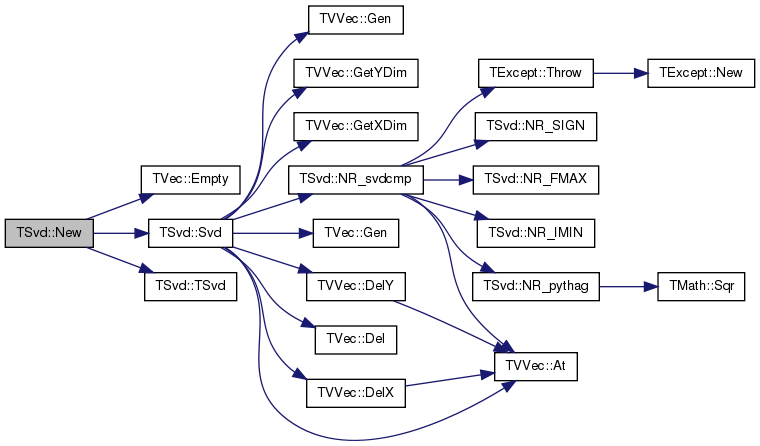
|
inlinestatic |
Definition at line 413 of file xmath.h.
Referenced by NR_svdcmp().
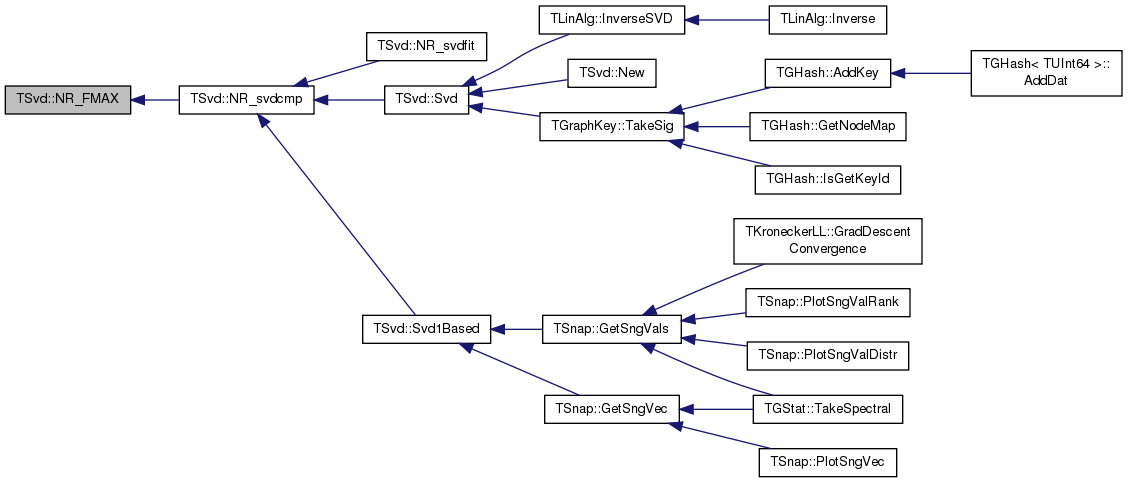
|
inlinestatic |
Definition at line 415 of file xmath.h.
Referenced by NR_svdcmp().
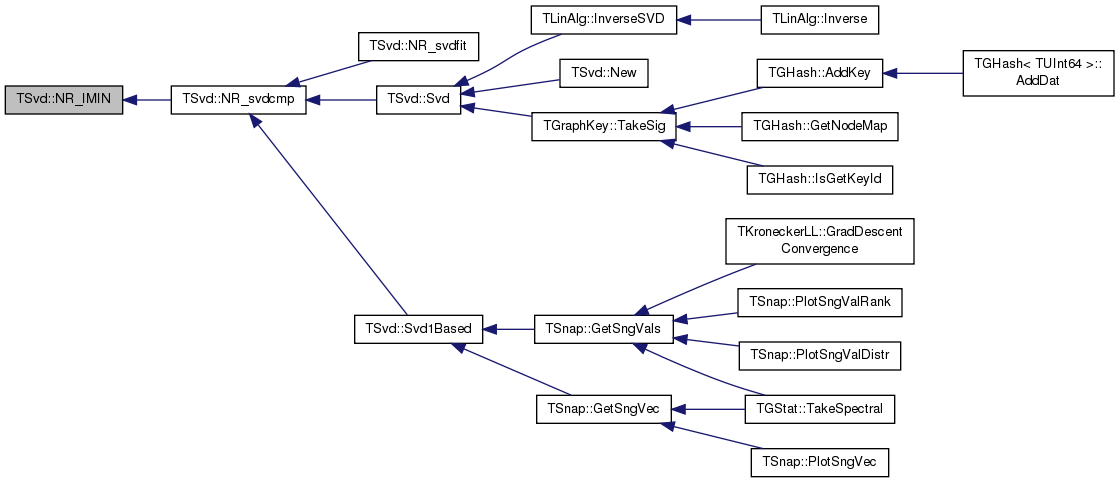
|
static |
Definition at line 959 of file xmath.cpp.
References TMath::Sqr().
Referenced by NR_svdcmp().

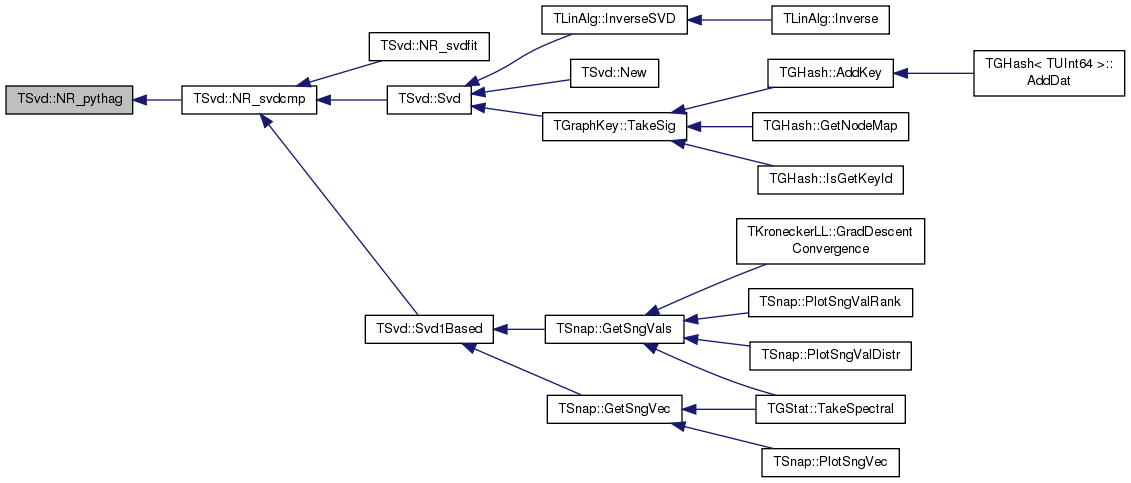
|
inlinestatic |
Definition at line 412 of file xmath.h.
Referenced by NR_svdcmp().
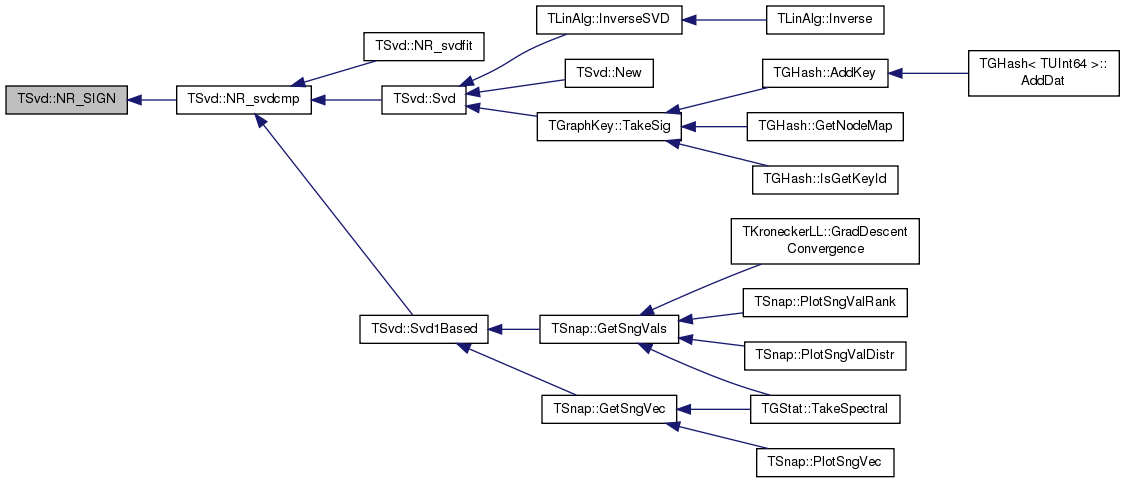
Definition at line 1147 of file xmath.cpp.
References TVVec< TVal >::At().
Referenced by NR_svdfit().


Definition at line 970 of file xmath.cpp.
References TVVec< TVal >::At(), NR_FMAX(), NR_IMIN(), NR_pythag(), NR_SIGN(), and TExcept::Throw().
Referenced by NR_svdfit(), Svd(), and Svd1Based().
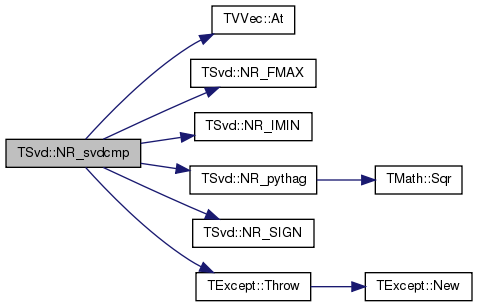
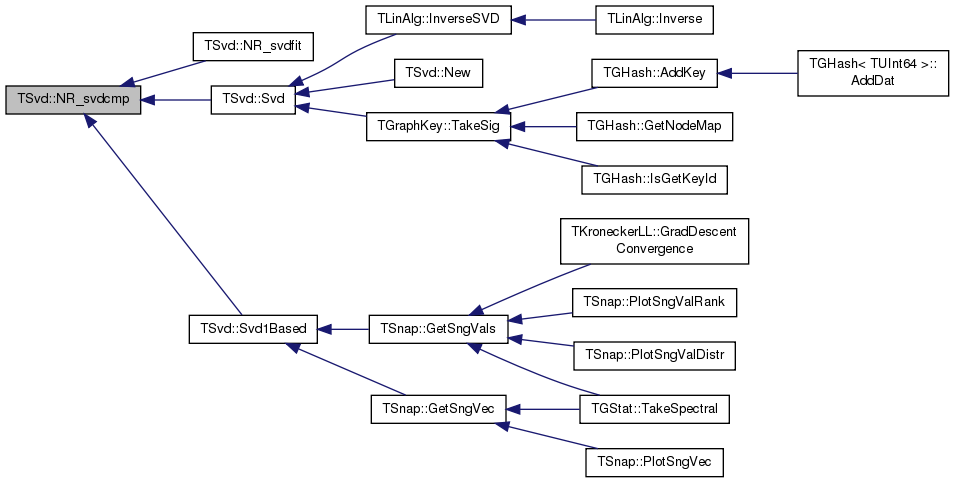
| void TSvd::NR_svdfit | ( | ) |
Definition at line 1185 of file xmath.cpp.
References TVVec< TVal >::At(), CfV, ChiSq, CovarVV, TVVec< TVal >::Gen(), GetSig(), GetXV(), GetY(), NR_svbksb(), NR_svdcmp(), NR_svdvar(), Recs, and Vars.
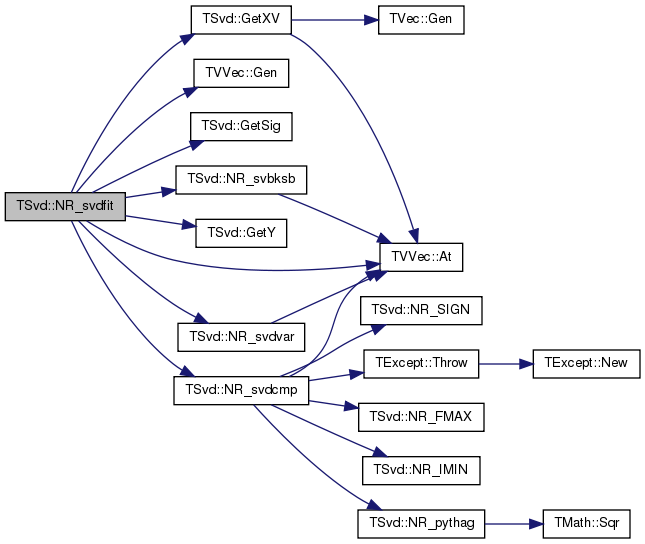
Definition at line 1168 of file xmath.cpp.
References TVVec< TVal >::At().
Referenced by NR_svdfit().


|
inline |
Definition at line 1232 of file xmath.cpp.
References TVVec< TVal >::At(), TVec< TVal, TSizeTy >::Del(), TVVec< TVal >::DelX(), TVVec< TVal >::DelY(), TVec< TVal, TSizeTy >::Gen(), TVVec< TVal >::Gen(), TVVec< TVal >::GetXDim(), TVVec< TVal >::GetYDim(), and NR_svdcmp().
Referenced by TLinAlg::InverseSVD(), New(), and TGraphKey::TakeSig().
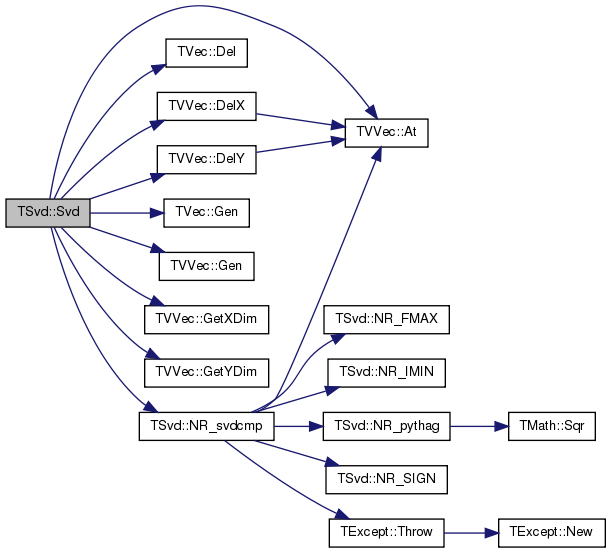

|
static |
Definition at line 1252 of file xmath.cpp.
References TVec< TVal, TSizeTy >::Del(), TVVec< TVal >::DelX(), TVVec< TVal >::DelY(), TVec< TVal, TSizeTy >::Gen(), TVVec< TVal >::Gen(), TVVec< TVal >::GetXDim(), TVVec< TVal >::GetYDim(), and NR_svdcmp().
Referenced by TSnap::GetSngVals(), and TSnap::GetSngVec().
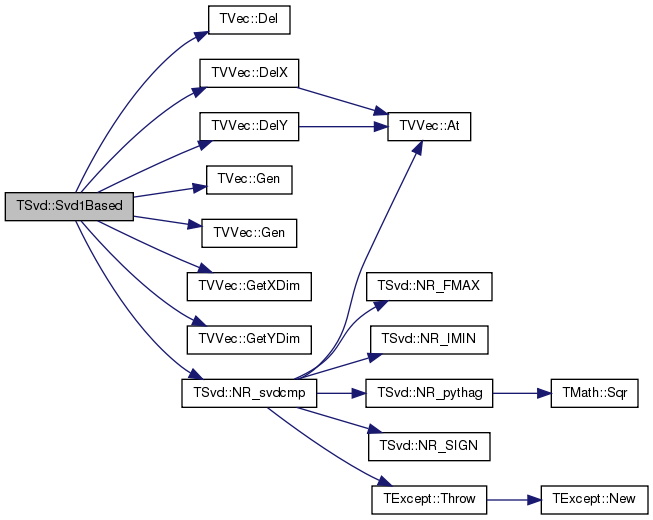
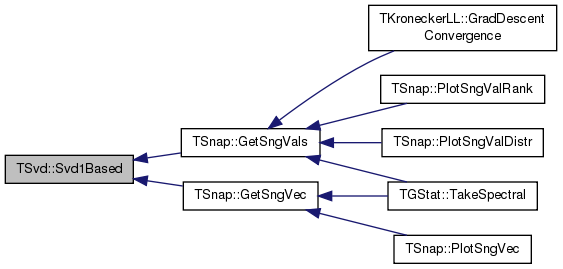
| void TSvd::Wr | ( | ) | const |
Definition at line 1263 of file xmath.cpp.
References GetCf(), GetCfUncer(), GetChiSq(), GetCovar(), and Vars.
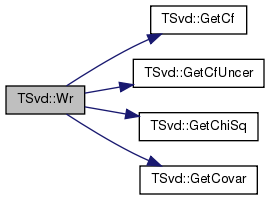
| TFltV TSvd::CfV |
Definition at line 404 of file xmath.h.
Referenced by GetCfV(), and NR_svdfit().
| double TSvd::ChiSq |
Definition at line 405 of file xmath.h.
Referenced by NR_svdfit().
| TFltVV TSvd::CovarVV |
Definition at line 403 of file xmath.h.
Referenced by NR_svdfit().
| int TSvd::Recs |
Definition at line 402 of file xmath.h.
Referenced by NR_svdfit().
| int TSvd::Vars |
Definition at line 402 of file xmath.h.
Referenced by GetCfUncerV(), NR_svdfit(), and Wr().